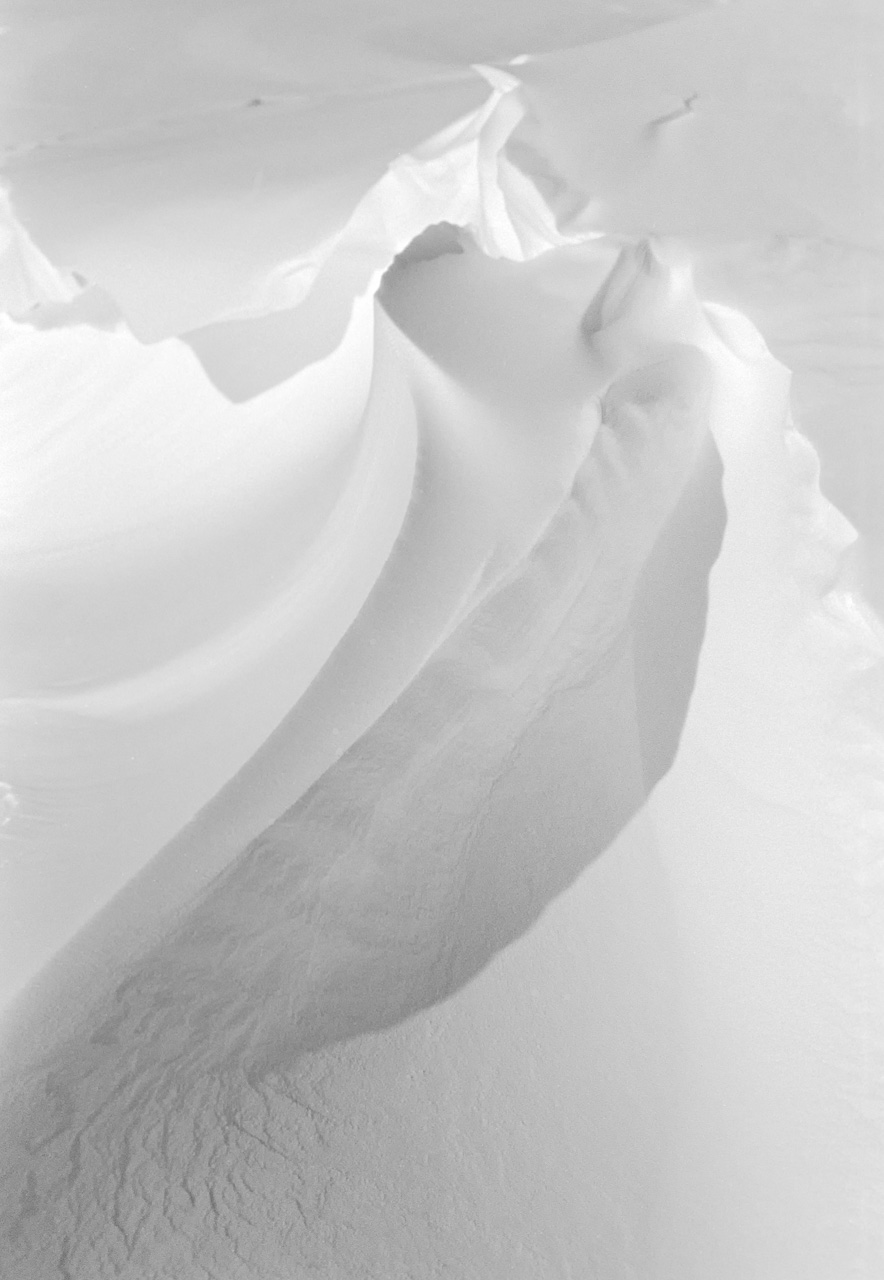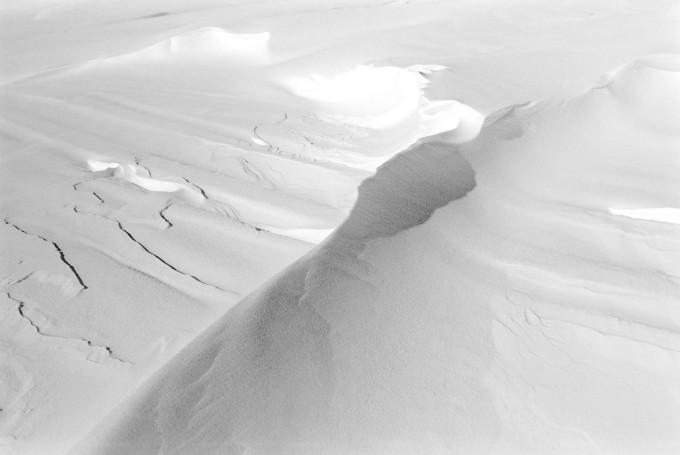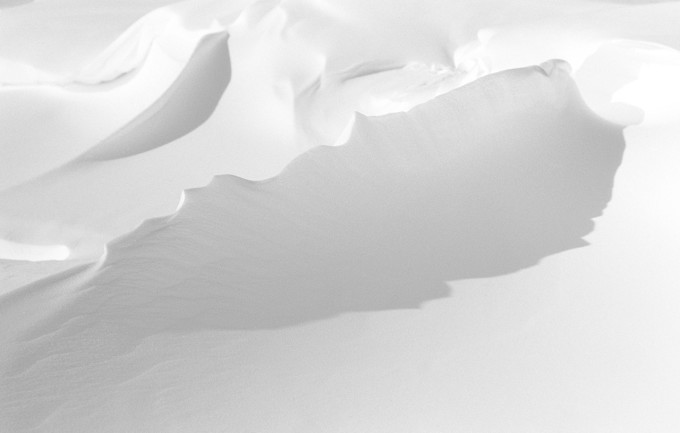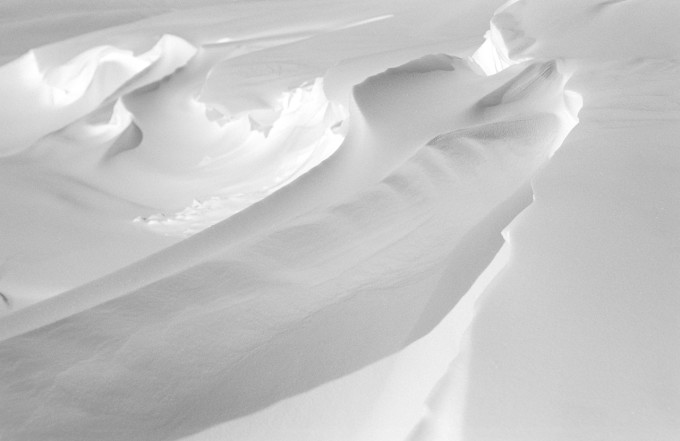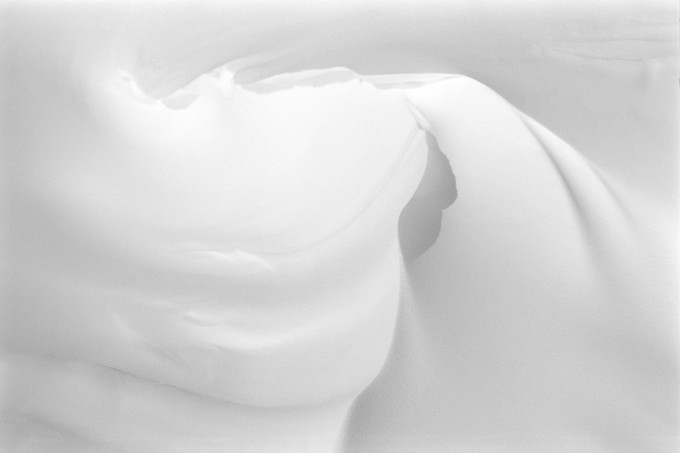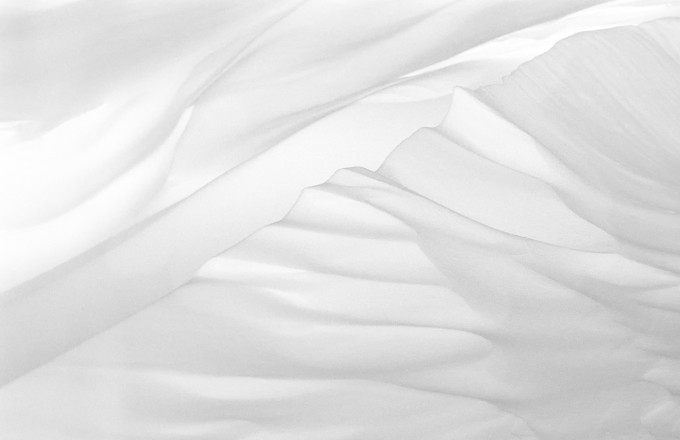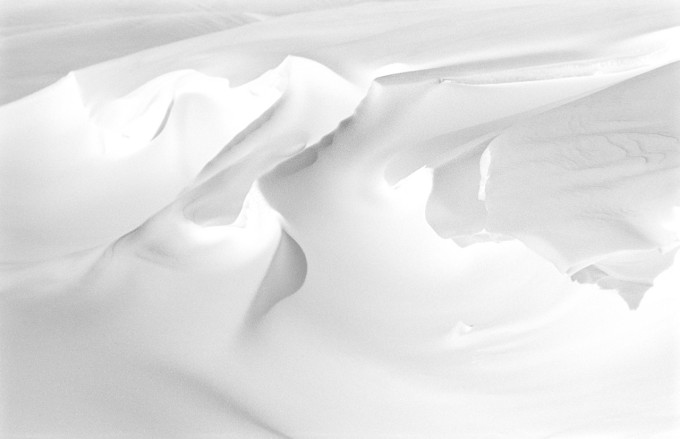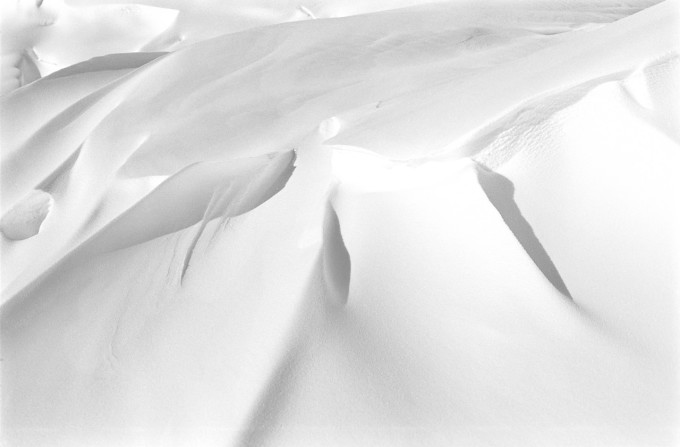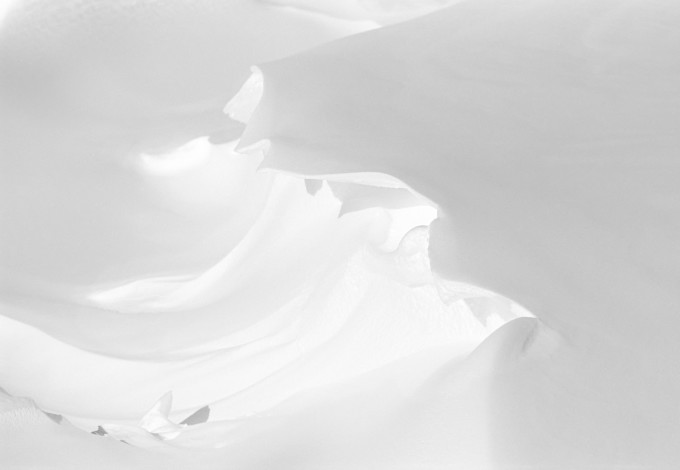All images by John Werle. Used with permission.
Photographer John Werle hails from Western Canada, and started in photography when he was going back to university, after a year off, and, naively, thought he needed a creative outlet. “My father had an early auto-exposure Zeiss, which always frustrated him because he could never remember how to use it the once or twice a year he pulled it out.” says John. “I started using it, in spite of its limitations, but progressed as soon as I could to a Canon Ftb, which was my first serious camera.”
Film and working in the darkroom would become a love of John’s. He was always into shapes, forms, curbes, shadows, lights, etc.
Because of his environment, he was always intrigued by the snow drifts. “After a particularly heavy snow, driven by strong winds, I had a location in mind and it proved to be even better than I had anticipated.” says John. “That was the genesis for this series, as I hoped to capture the sensuous shape and form of the drifts.”
This series of snow drift images were all taken on 35mm black and white film. He metered with his old Spotmatic because in the cold weather John just tends to not trust an autofocusing lens or a battery dependant camera. John states that the snow and wind conditions were such that these drifts were so hard-packed that he could walk on them without sinking in, or even leaving a footprint.
The process involved John leaving his car, taking a meter reading, shooting until his fingers were numb, returning to the car to warm up, putting the camera into a bag so as not to get condensation, and repeat the process.
“This was simply an exercise in photographing shape and form, pattern and curve, highlight and sparse shadow. I developed the negatives, and scanned them with a Nikon 8000 film scanner. After some experimentation, I achieved the slightly surreal look I was after.”
To get these images, he used a Pentax Spotmatic SP II, Super Takumar 50mm f1.4, and yellow filter. They were shot on a mix of Agfa APS 100 and Ilford FP4+. The images were then brought into in Photoshop, where the levels & curves were applied, and Topaz Detail was judiciously applied with a mask.
John really likes film, and especially loves black and white being an alternative to color. “Digital cameras, and cell phones, have given photographers a ‘shot gun’ approach to photography. It is easy to fire indiscriminately at any and all subjects, working on the theory that if enough shots are taken, a percentage, even if minute, must be good.” says John in an email to the Phoblographer. “Black and white, whether film or digital, requires forethought, and planning, and perhaps, studious creativity; it requires slowing down.” Of course, that’s what John has shown in these images.


